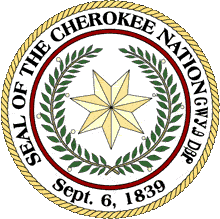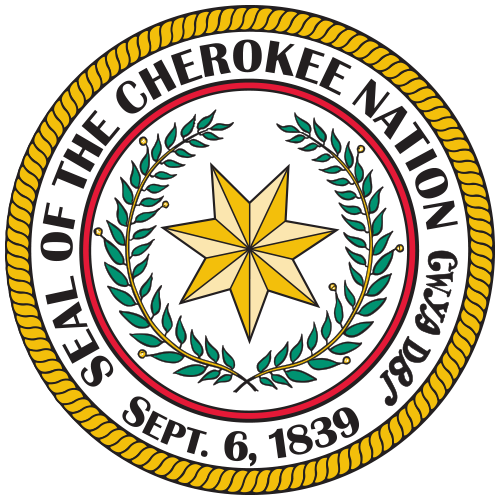
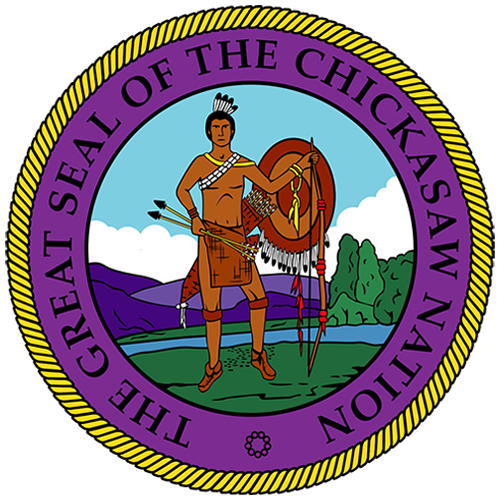
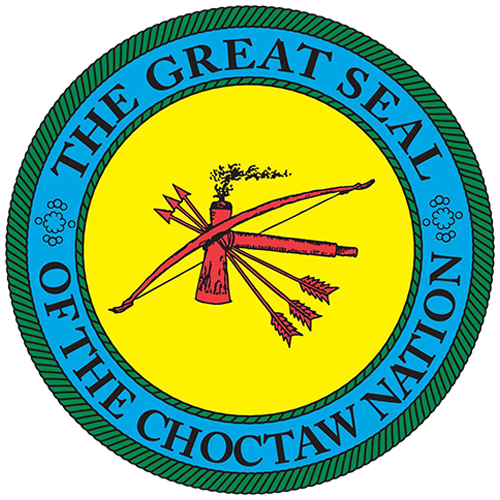
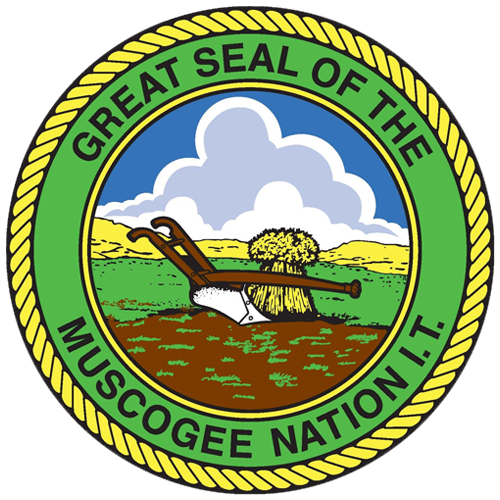
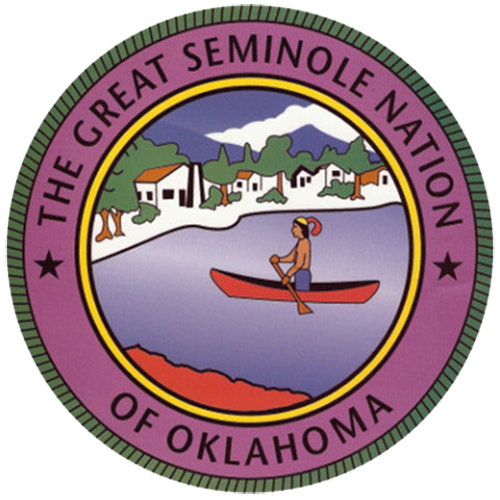
- Home
- Five Civilized Tribes
-
Council Documents
- Council Minutes
-
Resolutions
- Resolutions 1995
- Resolutions 1996
- Resolutions 1997
- Resolutions 1998
- Resolutions 1999
- Resolutions 2000
- Resolutions 2001
- Resolutions 2002
- Resolutions 2013
- Resolutions 2014
- Resolutions 2015
- Resolutions 2016
- Resolutions 2017
- Resolutions 2018
- Resolutions 2019
- Resolutions 2020
- Resolutions 2021
- Resolutions 2022
- Resolutions 2023
- Resolutions 2024
- Document Templates
Cherokee History
It was a spirit of survival and perseverance that carried the Cherokee to Indian Territory on the Trail of Tears. Today, it is the same spirit leading the Cherokee.
Since earliest contact with European explorers in the 1500’s, the Cherokee Nation has been identified as one of the most advanced among Native American tribes. Cherokee culture thrived for thousands of years in the southeastern United States before European contact. After contact, Cherokee society and culture continued to develop, progressing with acquisitions from European settlers. Soon, we had shaped a bicultural government and a society that matched the most ‘civilized’ of the time.
In the 1830’s, gold was discovered in Georgia. The settlers began to covet the Cherokee homelands, and a period of Indian Removals began to make way for more white settlement. In 1838, thousands of Cherokee men, women and children were rounded up and marched 1,000 miles to Indian Territory, known today as the state of Oklahoma. Thousands died in the internment camps, on the trail, and after arrival (due to the effects of the journey.)
In Indian Territory, the Cherokee soon rebuilt a democratic form of government, churches, schools, newspapers and businesses. A new constitution was adopted in September of 1839, the same year the final group of Cherokee arrived on the Trail of Tears. Tahlequah, the new Cherokee capital, and nearby Park Hill, became hubs of business activity and centers of cultural activity in Indian Territory. In 1844, the Cherokee Advocate, printed in both the Cherokee and English languages, became the first newspaper in Indian Territory, and the first in a Native American language. The Cherokee Messenger was its first periodical. Soon, the Cherokee’s educational system of 144 elementary schools and two higher education institutes, the Cherokee Male and Female Seminaries, rivaled all others. Many white settlements bordering the Cherokee Nation took advantage of the superior school system, and paid tuition to have their children attend the Cherokee schools.
Other bilingual materials, which had been made possible by Sequoyah’s syllabary in 1821, led the Cherokee people to a level of literacy higher than their white counterparts, all before Oklahoma statehood in 1907.
The Cherokee rebuilt a progressive lifestyle from remnants of the society and the culture we were forced to leave behind. The years between the removal and the 1860’s were called the “Cherokee Golden Age,” a period of prosperity that ended with division over the Civil War. After the Civil War, more Cherokee lands and rights were taken by the government due to the Cherokee being persuaded to side with the Confederacy at one point during the war. What remained of Cherokee tribal land was divided into individual allotments which were given to Cherokees listed in the census compiled by the Dawes Commission in the late 1890s. Descendants of those original enrollees make up today’s Cherokee Nation tribal citizenship.
The Cherokee Nation is the second largest Indian tribe in the United States. There are more than 300,000 tribal members. Almost 70,000 of these Cherokees reside in the 7,000 square mile area of the Cherokee Nation which is not a reservation, but a jurisdictional service area that includes all of eight counties and portions of six in northeastern Oklahoma.
Today, the Cherokee Nation is a leader in education, housing, vocational training, business and economic development.
As a federally-recognized Indian tribe, the Cherokee Nation has both the opportunity and the sovereign right to exercise control and development over tribal assets, which includes 66,000 acres of land, as well as 96 miles of the Arkansas Riverbed.
The Cherokee Nation has a tripartite democratic form of government which include judicial, executive and legislative branches. A revised constitution of the Cherokee Nation was ratified by the Cherokee people in June of 1976, and approved by the Commissioner of Indian Affairs on September 5, 1975.
Executive power is vested in the Principal Chief, the legislative power in the Tribal Council, and judicial power in the Cherokee Nation Judicial Appeals Tribunal.
The position of Deputy Principal Chief is also part of the executive branch. The Deputy Principal Chief also presides over the Tribal Council during their monthly meetings. Like the Principal and Deputy Principal Chief, the council is elected to four-year terms by the registered tribal voters. The council is the legislative branch of government and represent the nine districts of the Cherokee Nation in the 14 county jurisdictional area.
The judicial branch of tribal government includes the District Court and Judicial Appeals Tribunal, which is comparable to the U.S. Supreme Court. The tribunal consists of three members who are appointed by the Principal Chief and confirmed by the council. It is the highest court of the Cherokee Nation and oversees internal legal disputes and the District Court. The District Judge and an Associate District Judge preside over the tribe’s District Court and hear all cases brought before it under jurisdiction of the Cherokee Nation Judicial Code.
The tribe has taken the lead in self-governance through the enactment of a tax code, re-establishment of the tribe’s district court, law enforcement and judicial systems. In addition, the nation operates several successful enterprises, including Cherokee Nation Enterprises, and Cherokee Nation Industries, Inc. CNE operates three Cherokee Casino facilities, two convenience store/gas stations, and a Cherokee Gift Shop. CNI is a multi-million dollar supplier to several major defense contractors.
The Cherokee Nation authorized the negotiation of a tribal self-governance agreement for direct funding from the U.S. Congress on February 10, 1990. The agreement authorizes the tribe to plan, conduct, consolidate and administer programs and receive direct funding to deliver services to tribal members. Self-governance is a change from the paternalistic controls the federal government has exercised in the past, to full-tribal responsibility for self-government and independence intended by the treaties with sovereign Indian nations.
Self-governance gained an added dimension in November, 1990, when the Cherokee Nation passed legislation establishing a Cherokee Nation District Court and a criminal penal and procedure code.
A few months later, in February, 1991, the tribe unanimously approved four legislative acts to facilitate cooperative law enforcement within the jurisdictional boundaries of the Cherokee Nation. In compliance with State of Oklahoma Statutes, the laws established a Penal Code, provisions for bail and bonding, a Uniform Vehicle Code and a Uniform Controlled Dangerous Substance Act.
The passage of these acts strengthens tribal sovereignty and allows non-Indian law enforcement authorities to pursue and apprehend criminal suspects and vehicle code violators on Cherokee Nation land.
Also on February 10, 1990, the Cherokee Nation approved a tax code which included a tobacco tax and sales tax on goods or services sold or rendered on tribal land. The purpose of the tax code is to raise revenue to provide governmental services to Cherokee people and promote economic development, self-sufficiency and a strong tribal government.
To govern the tax code, the Cherokee Nation later developed law enforcement codes and judicial procedures guided by the self-governance agreement and the tribe’s code of ethics.
On May 30, 1996, the Cherokee Nation and four other Oklahoma tribes reached an agreement with state lawmakers on taxing Indian sales of motor fuel. The tribes agreed not to sue the state or to license individual tribal members to sell motor fuel. In return, they will be rebated part of the money resulting from fuel sales on their lands each quarter of the year for 20 years. They also agreed to spend the money rebated to them for law enforcement, education, roads and health care.
The Cherokee Nation received its first check from the fuel tax agreement for $1.1 million from the state on February 4, 1997. The amount of money received by Cherokee Nation was based on a formula negotiated with the state which uses the number of Cherokee tribal members in Oklahoma and the gallons of fuel sold by the tribe’s two convenience stores (Tahlequah and Fort Gibson) between October 1 and December 31, 1996.
Info provided by the Cherokee Nation Cultural Resource Center. For information regarding culture and language, please contact: cultural@cherokee.org
For more information visit the Cherokee Nation Web Site at www.cherokee.org
